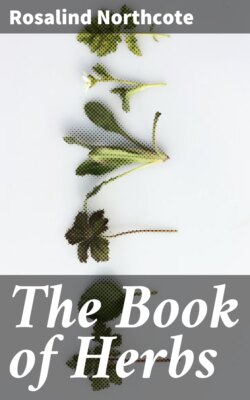Читать книгу The Book of Herbs - Rosalind Northcote - Страница 25
На сайте Литреса книга снята с продажи.
Goat’s Beard (Tragopogon pratensis).
ОглавлениеTable of Contents
And goodly now the noon-tide hour,
When from his high meridian tower,
The sun looks down in majesty,
What time about the grassy lea
The Goat’s Beard, prompt his rise to hail
With broad expanded disk, in veil
Close mantling wraps his yellow head,
And goes, as peasants say, to bed.
Bp. Mant.
The habits of Goat’s Beard, or as it is often called, John-go-to-bed-at-noon, are indicated by the latter name. It is less known as Joseph’s Flower, which Mr. Friend[24] says “seems to owe its origin to pictures in which the husband of Mary is represented as a long-bearded old man,” but Gerarde gives the Low-Dutch name of his time, “Josephe’s Bloemen,” and says “when these flowers be come to their full maturity and ripeness, they grow into a downy blow-ball, like those of the Dandelion, which is carried away by the winde.” Evelyn praises it, and is indignant with the cunning of the seed-sellers. “Of late they have Italianiz’d the name, and now generally call it Salsifex … to disguise it, being a very common field herb, growing in most parts of England, would have it thought (with many others) an Exotick.” He does not give the full Latin name, so one cannot tell whether it is our Salsify (Tragopogon porrifolius) that he means, or T. pratensis, the variety once more generally cultivated. The latter seems the likeliest, as its yellow flowers are far more common than the purple ones of salsify. T. porrifolius is extremely rare in a wild state, but T. pratensis grows in “medows and fertil pastures in most parts of England.” T. pratensis is never cultivated now, and “Salsify” applies exclusively to Purple Goat’s Beard (T. porrifolium). The old herbalists praised it very highly.
[24] “Flowers and Flower-lore.”
